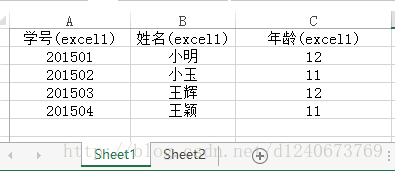使用sklearn之LabelEncoder将Label标准化的方法
LabelEncoder可以将标签分配一个0—n_classes-1之间的编码
将各种标签分配一个可数的连续编号:
>>> from sklearn import preprocessing >>> le = preprocessing.LabelEncoder() >>> le.fit([1, 2, 2, 6]) LabelEncoder() >>> le.classes_ array([1, 2, 6]) >>> le.transform([1, 1, 2, 6]) # Transform Categories Into Integers array([0, 0, 1, 2], dtype=int64) >>> le.inverse_transform([0, 0, 1, 2]) # Transform Integers Into Categories array([1, 1, 2, 6])
>>> le = preprocessing.LabelEncoder() >>> le.fit(["paris", "paris", "tokyo", "amsterdam"]) LabelEncoder() >>> list(le.classes_) ['amsterdam', 'paris', 'tokyo'] >>> le.transform(["tokyo", "tokyo", "paris"]) # Transform Categories Into Integers array([2, 2, 1], dtype=int64) >>> list(le.inverse_transform([2, 2, 1])) #Transform Integers Into Categories ['tokyo', 'tokyo', 'paris']
将DataFrame中的所有ID标签转换成连续编号:
from sklearn.preprocessing import LabelEncoder
import numpy as np
import pandas as pd
df=pd.read_csv('testdata.csv',sep='|',header=None)
0 1 2 3 4 5 0 37 52 55 50 38 54 1 17 32 20 9 6 48 2 28 10 56 51 45 16 3 27 49 41 30 53 19 4 44 29 8 1 46 13 5 11 26 21 14 7 33 6 0 39 22 33 35 43 7 18 15 47 5 25 34 8 23 2 4 9 3 31 9 12 57 36 40 42 24
le = LabelEncoder() le.fit(np.unique(df.values)) df.apply(le.transform)
0 1 2 3 4 5 0 37 52 55 50 38 54 1 17 32 20 9 6 48 2 28 10 56 51 45 16 3 27 49 41 30 53 19 4 44 29 8 1 46 13 5 11 26 21 14 7 33 6 0 39 22 33 35 43 7 18 15 47 5 25 34 8 23 2 4 9 3 31 9 12 57 36 40 42 24
将DataFrame中的每一行ID标签分别转换成连续编号:
import pandas as pd from sklearn.preprocessing import LabelEncoder from sklearn.pipeline import Pipeline class MultiColumnLabelEncoder: def __init__(self,columns = None): self.columns = columns # array of column names to encode def fit(self,X,y=None): return self # not relevant here def transform(self,X): ''' Transforms columns of X specified in self.columns using LabelEncoder(). If no columns specified, transforms all columns in X. ''' output = X.copy() if self.columns is not None: for col in self.columns: output[col] = LabelEncoder().fit_transform(output[col]) else: for colname,col in output.iteritems(): output[colname] = LabelEncoder().fit_transform(col) return output def fit_transform(self,X,y=None): return self.fit(X,y).transform(X)
MultiColumnLabelEncoder(columns = [0, 1, 2, 3, 4, 5]).fit_transform(df)
或者
df.apply(LabelEncoder().fit_transform)
0 1 2 3 4 5 0 8 8 8 7 5 9 1 3 5 2 2 1 8 2 7 1 9 8 7 1 3 6 7 6 4 9 2 4 9 4 1 0 8 0 5 1 3 3 3 2 5 6 0 6 4 5 4 7 7 4 2 7 1 3 6 8 5 0 0 2 0 4 9 2 9 5 6 6 3
# Create some toy data in a Pandas dataframe
fruit_data = pd.DataFrame({
'fruit': ['apple','orange','pear','orange'],
'color': ['red','orange','green','green'],
'weight': [5,6,3,4]
})
color fruit weight 0 red apple 5 1 orange orange 6 2 green pear 3 3 green orange 4
MultiColumnLabelEncoder(columns = ['fruit','color']).fit_transform(fruit_data)
或者
fruit_data[['fruit','color']]=fruit_data[['fruit','color']].apply(LabelEncoder().fit_transform)
color fruit weight 0 2 0 5 1 1 1 6 2 0 2 3 3 0 1 4
以上这篇使用sklearn之LabelEncoder将Label标准化的方法就是小编分享给大家的全部内容了,希望能给大家一个参考,也希望大家多多支持【听图阁-专注于Python设计】。


